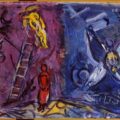Sam Shepard is a place

Ed note: Sam Shepard passed away on July 27, 2017. He was alive at the time this essay was written.
Sam Shepard is a place, and in The One Inside (Knopf 2017) you’re there with him on the ground in the American desert. Shepard doesn’t like to fly so maybe this gives him a different point of view from the rest of us who are always taking off, in the air, and landing. His characters are found in motel rooms on empty highways, on porches, wandering open space, asleep under overpasses, walking next to the interstate as cars fly by so fast they never stop to notice anyone’s there.
What’s on their minds is only hinted at in these dialogues. In one, a woman has been secretly recording conversations between herself and the narrator. She wants to publish them as they are, but he believes that’s not writing, that’s stealing; it’s “plagiarism.” What’s different about what the writer does, versus the thief or recorder? Written dialogues have “intention,” are more to the point. But what’s the point? In the Foreword by Patti Smith, she suggests, “The manuscript before me is a dark compass. All points proceed from its magnetic north—the interior landscape of the narrator…. Whether he paints himself in a good or bad light is not the point. The point is to lay stuff out, smooth the curling edges.”
Shepard is a master of written dialogue that sounds like it’s been tossed off on the spur of the moment. What is said in the dialogues in The One Inside are not tossed off. They’re composed, written. Of course, I’ve never asked him. Even though I was once with him, in the audience for his play Fool for Love at Magic Theatre, San Francisco, with Kathy Baker and Ed Harris in the lead roles. They were both young then, and so was I, and so was Sam. I was there with my boyfriend and his parents. His dad went up to Sam Shepard (who was just there in the lobby, in the crowd with everyone else before the play started), and introduced himself to the Pulitzer Prize winning playwright, and told him, “My father’s name was Samuel.” This story became a legend in our family: How Joe told Sam we wished we had four seats together to watch the play, didn’t ask for anything, but Sam took it upon himself to intervene and seated the four of us in the best seats in the house, because Joe Rogoff had discerned that he had this special connection to Sam Shepard: Joe’s father’s name was Samuel.
The legend of Joe’s father, Samuel Rogoff, is that he killed himself, though the family never said this out loud. It’s something I picked up on in the outskirts of conversations, listening for clues to fill in their narrative, which had gaps.
This is what Shepard does as well. He (somehow) reveals what else is going on, what’s unsaid within the dialogues, unseen in the landscapes, what can never be said out loud because the secret will kill everyone because the secret is too much and better left unsaid. He lets you know the secret is there by showing the behavior that has followed the trauma caused by the secret, the lasting effects on the psyche, which comes out through gestures and comments, especially offhand ones, thrown off in the midst of some other plot line, asides.
A father figure appears throughout Shepard’s body of work, their relationship tangled and upsetting. “I could see him at dusk in his rocker with a glass of whiskey and a glass of milk beside it, picking the shrapnel at the back of his neck and staring at nothing from the front porch.” In The One Inside, the father shows up often as a “tiny man,” eight inches tall, a “miniature corpse” in a gangster’s trunk, encased transparent in “see-through plastic,” “diminishing,” “bit by bit.” The narrator wonders, “Why or how he has shrunken inside these various dreams and apparitions is beyond me…. But a miniaturization only causes you to look closer.”
Patti Smith calls the book “a coalescing atlas.” It’s told through offhand observations, recurring dreams, and troubled memories, quick and sudden, out of nowhere recalling some afternoon with people he never saw again, profound connections with strangers who had no purpose except the little story they were part of, together for the briefest time, for sex, exchange of ideas, interrogations.
These disconnected encounters add up to the book, The One Inside, which consists of fragments, some less than a full page, some people carried through in repeat appearances, some never heard from again; certain characters are running threads, while others unravel, spin off, discarded, forgotten. Is it the author’s job to connect them? In retrospect, can we recognize patterns? When the book’s spine is finally in place, what does it become? Is there a beginning/middle/end, narrative arc, hero’s journey, return with the treasure? The arc in Shepard’s plays is more crosshatched or off the rails. His prose is more snippets. Yet, it’s something: it’s revelatory; you feel things.
Photograph by Chad Batka
About Marianne Rogoff
Marianne Rogoff is the author of Love Is Blind in One Eye: 7 Stories (Shebooks, 2016), the memoir Silvie's Life (Zenobia Press, 1995; Gradiva, 2006), and numerous travel stories, short fictions, essays, and book reviews. She teaches Writing & Literature at California College of the Arts, Big History at Dominican University, and leads weeklong Writers Studio-Workshop trips to exotic locales during winter and summer breaks. Visit mariannerogoff.com to read more.





